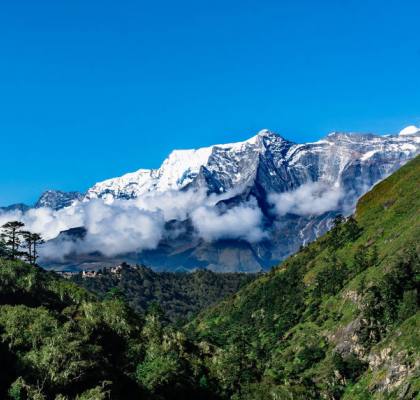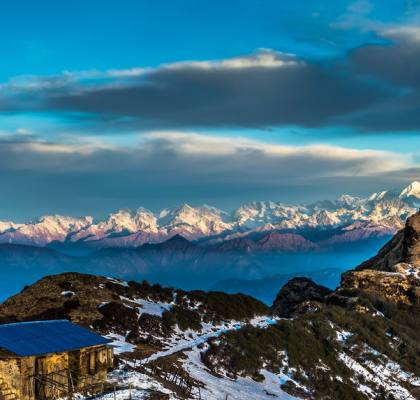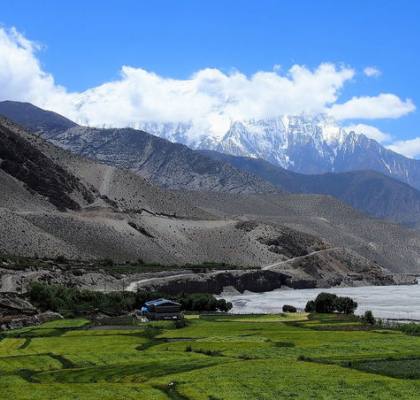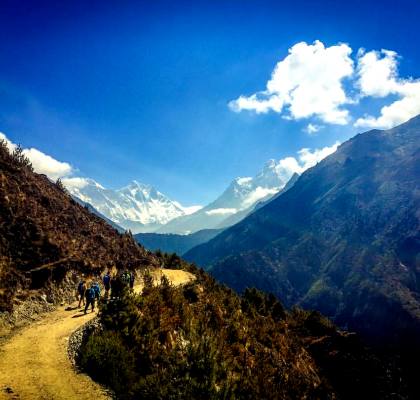The Gurung people- Ethnic group of Nepal
GURUNG
Gurung is an ethnic group of mid hill region of the southern slope of Himalaya in the west central Nepal. Originally they were migrated from Northern part of Nepal around 6th century and settled around the lap of Annapurna and Lamjung Himalaya in between Budhi Gandaki river in the east and Kaligandaki river in the west (Now it is known as a Gandaki Province). But nowadays they have migrated to all over Nepal from East to west and also in Terai region in different time. According to the history they were migrated from Annapurna region during Nepal unification mission as a army and police and some others migrated with sheep and other trade. Gurung is a people of Mongoloid race and indigenous member of the indigenous group of Nepal which is listed in 59 different groups by Janajati Utthan Rashtriya Pratishthan. They have own mother language, tradition and culture. There are 686,000 Gurung (Τamu) in population of Nepal but in official data there are only 522,641, because Ghale (Gurung )haven’t recorded in total numbers of Gurung.
Main occupation of Gurung is agriculture and keeping huge numbers of sheep. And most of the men also join Gurkha regiments in Brithish Army, Singapore Police, Indian Army as well as Nepal army and Police force. And the women produce sheep wool items like Woolen coat, blanket (Ghumradi), carpet (Radi), Shawl and some other items beside farming. In the history, big numbers of Gurung served in world war I and II and eaened Victoria cross. The main income source of Gurung family is pension and salary of Gurkha regiment those who have served, farming, sheep and woolen trade and so on. Because the man of the family who does not go to the Gurkhas, they travel to the North and south border for trade. They sale and exchange woolen items and bring back necessary things to home.
A traditional dress of Gurung men a short shirt like a blouse (Daura) tied across the front, short skirt (Kachhad) wrapped across the waist and tied by wide belt (Patuka) and typical hat (Topi) on head. And for the women they almost everyone wear like a sari which is little dark and printed (Chhitko Gunyu), must be tied by wide belt, blouse tied across the front and little thicker shawl (Kramu or Barko) made by special material call Malena. And they wear Ornaments depends on how much they can afford. Specially they wear ear and nose rings, coral and gold necklaces which is given by their husband during marriage and Shirbandi (crown) and others depends of wealth.
Normally the young Gurung people (girls) are quite frank and make a lots of joke each other even they are unknown. This must be the good way to introduce each other. In the history they were divided in 20 different clans (Char Jaat- 4 clans and Sorha Jaat- 16 clans). They were even not allowed to marry each other in that period. But now in the modern society they don’t have that debate even they are divided over 100 different clan and sub-clans. Normaly the Gurung follows arrange marriage. In the tradition they had a cross cousin marriage system (the boy marry with the daughter of father’s sister). It was almost compulsory in the previous years, but nowadays most them rejected that system and they go to out of family to find the life partner. But the cousins from the paralleled linage is strictly prohibited. In the Gurung community, the whole villagers select a head of the village call Chiva in in Gurung language and they solve their minor administrative problem and debate in their own village by Chiva and community members. They don’t go to the police and court for the minor cases. They go to the court only when they couldn’t solve by community.
The Gurung follows all the tradition and culture from birth to death as others. When they give birth to the baby, they have Nama Karma (giving name) in 7 or 9 days of the birth and weaning ceremony in 5-7 months. For the son (boy) , when he cross 2 years, they have a Putpute Karma (dance ceremony), at that time they invite some Kumari girls and perform dance, feast relatives and offer some money (Dakshina) to the ladies who perform special Putpute dance. And when the boy cross 5 years they have first hair cut ceremony and for the girls they provide first Gunyu Choli when they are 7 or 9 years. Normally Gurung people used to follow Tantrism (Bonism) in the tradition. They are still following it and believe on nature worship. But nowadays most of them are following Buddism/Lamaism. The people who follows Bonism, they use Pachyu and Ghyapri (Ghyabring) and the Buddhism followers use Lama and also Pachyu/Ghyapri in availability. Nowadays some migrated Gurung follows Brahmin priest as well who are dominated by the other communities. When the people dies in Gurung family, they have two different ways to dispose dead body, cremation and burial both. The priest have to find good day for funeral. Maternal uncle and brother in law are the most important during funeral activities in Gurung culture. The funeral activities called Arghum or Paye in Gurung language can be complete in 7 days, 15 days or 49 days depends on how long they want to extend. The funeral activity is not strict as Hindus. When the Paye is over they slaughter sheep depends on gender (Male for male and female for female) and feast to the relatives and neighbors.
In the Gurung tradition, they have so many different festivals and ceremonies in the different seasons. Some of them are very important and compulsory to celebrate. The main traditions are Kulpuja (offering for ancrstors), Lhosar (New year) etc. And they have so many other traditional song, dance and drama like Ghatu, Sorathi, Krishnacharitra. Those 3 items are related to the story of god, king and queen. They call Song drama, they sing a song, make a dance and also act like a drama of different ruler and god. And another very famous and important tradition is Rodhi. It means to be gathered in community house. Normally in the country side most of the young people are very busy in farming during the day. Then in the evening they gathered in a group in certain house which is running by community and make a fun sing a song (mostly duet) by young man and lady, make a dance and some old as well as young people they bring their sheep wool to make a thread for carpet and work it out with enjoyment of Rodhi. Chief of the Rodhi called Rosyoba and Rosyo ma (who are selected by the community) run the Rodhi house. This culture is the very good way to entertain and to know each other better. Some young people marry each other from the introduction from there too.
References
GNAS Journal, Vol. 17
People of Nepal Bista D B
Articles about Gurung and different ethnic group.
Recent Post
Related Blog(s)
- 10 Reasons to Visit Nepal
- Top 5 Best Treks in December
- 5 reasons to choose Ghorepani poon hill trek
- Best Trekking Destinations in Nepal in February
- 10 Best Short Treks in Nepal
- 10 Things to do during Everest base camp trek
- 5 Things To Do In Kathmandu
- Top 5 Best Treks in Annapurna Region
- Top 5 best treks in the Everest region










